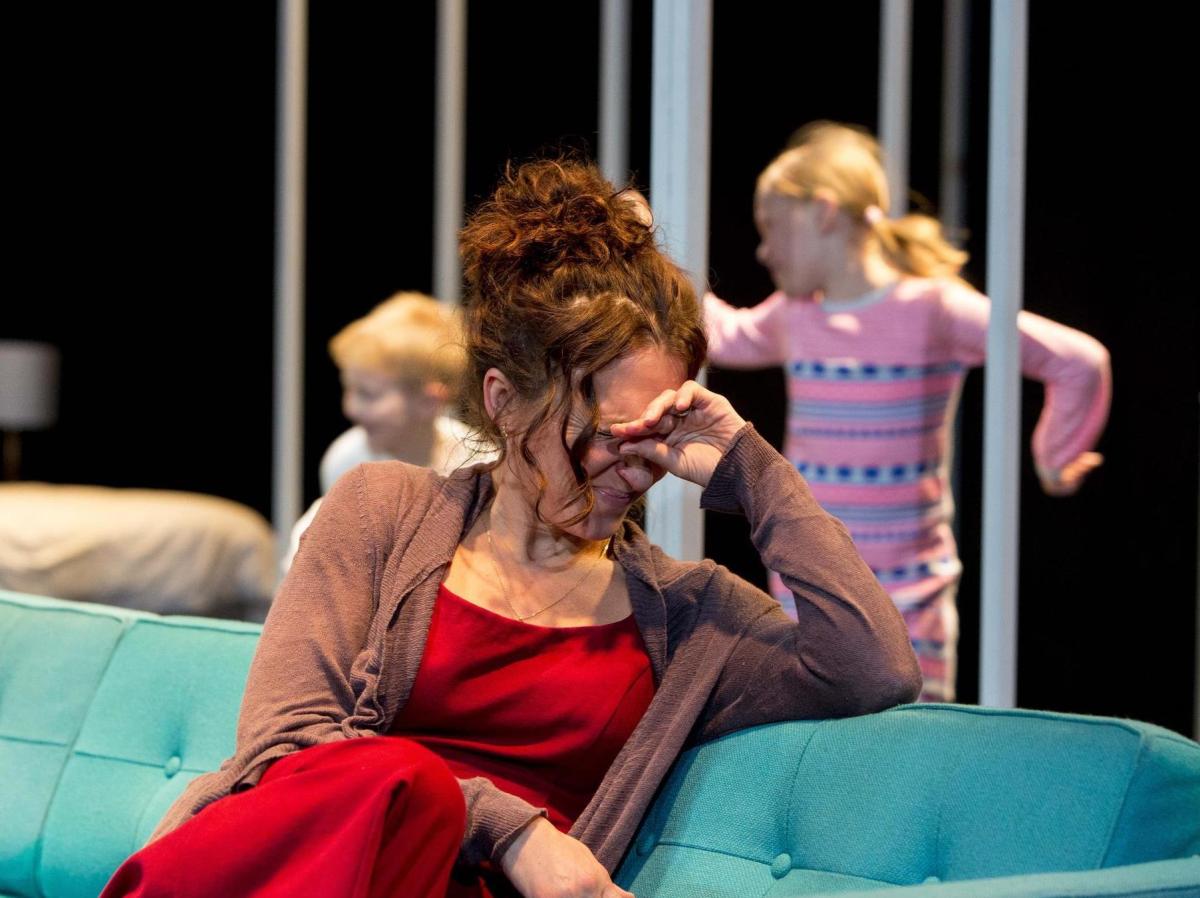Finn Dauphinee, Blazey Best and Ava Strybosch. Image by Brett Boardman.
In Ibsen’s A Doll’s House, the lead character Nora slammed the door on her husband and children. More than a century later, the Belvoir’s Nora depicts Nora’s journey after A Doll House, in a modern Australian context.
In the first act of Nora, we are unnecessarily subjected to a condensed, modernised summary of A Doll’s House… and it doesn’t work. Nora’s silent scream in A Doll’s House is a slow burn. In trying to short-cut through that, it loses meaning. Hence, it becomes confusing why Nora leaves her family, something that was never an issue with Ibsen’s A Doll’s House. As we are never quite convinced that Nora is justified in her decision, she comes off as a self-centred, neurotic basket case, rather than an oppressed woman trapped by circumstance. This Nora is too petty to be likeable, and Damien Ryan’s Torvald is too enigmatic to be unlikeable – the end result is that we wind up more sympathetic to Torvald than Nora.
The addition of Nora’s secret bank account is doubtless an attempt to modernise the story, however it creates a whole new set of problems and is one of the many additions that hasn’t been thought out clearly. It makes her leaving an entirely calculated and planned action, so some of the suspense is lost. In A Doll’s House, we see Nora’s dramatic turning point (the point when she makes the decision to leave). However, the addition of this bank account means that decision was made long before the events depicted in Nora, so the audience is robbed of the opportunity to witness the most compelling point in Nora’s character journey. Furthermore, the act of Nora leaving is no longer as brave, risky or impressive with the safety net of a few grand in the bank.
After a fairly tedious Act 1, I was all the more anxious to see where Nora’s path leads after she’s done the unthinkable. So imagine the disappointment to find that Nora’s long anticipated next move was to, for an hour and a half, talk about her feelings. Underwhelming to say the least. But more so, depressing. In Ibsen’s A Doll’s House, we witness the transformation of Nora from a passive, oppressed character to an active, empowered character. In Nora, all that is undone. Nora reverts back to passive non-action. She seeks out an old work colleague with the expectation she will help her get her old job back. She dosses on her friend’s sofa. She makes no effort to do anything independently. Nora is a non-event. Linda Cropper as Helen exudes talent, but even she fails to pull off writing this bad.
Direction is generally schizophrenic and results in a noticeable absence of atmosphere. It largely falls to Kelly Ryall’s music to establish a mood, and although beautiful, it is one-tone, and like this production, goes nowhere. Likewise, Marg Horwell’s set in Act 1 is a brilliant visual analogy that just doesn’t develop in Act 2.
It’s not surprising that this opening night started with a full house and ended half empty. The surprising thing is how fundamentally the creators of Nora seemed to have missed the point of the title character. For audiences unfamiliar with Ibsen this production is merely confusing, but for fans of A Doll’s House, it is insulting.
Rating: 1 out of 5 starsNora
By Kit Brookman and Anne-Louise Sarks after A Doll’s House by Henrik Ibsen
Director: Anne-Louise Sarks
Set Designer: Marg Horwell
Costume Designer: Mel Page
Lighting Designer: Paul Jackson
Composer: Kelly Ryall
Stage Manager: Karen Faure
Assistant Stage Manager: Keiren Smith
Cast: Blazey Best, Toby Challenor, Linda Cropper, Finn Dauphinee, Indianna Gregg, Damien Ryan, Ava Strybosch
Belvoir, Surrey Hills
www.belvoir.com.au
9 August – 14 September






